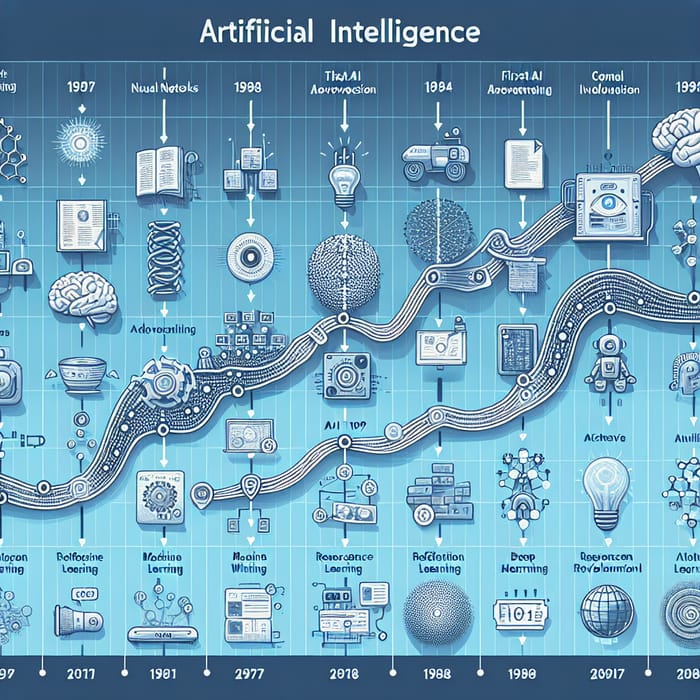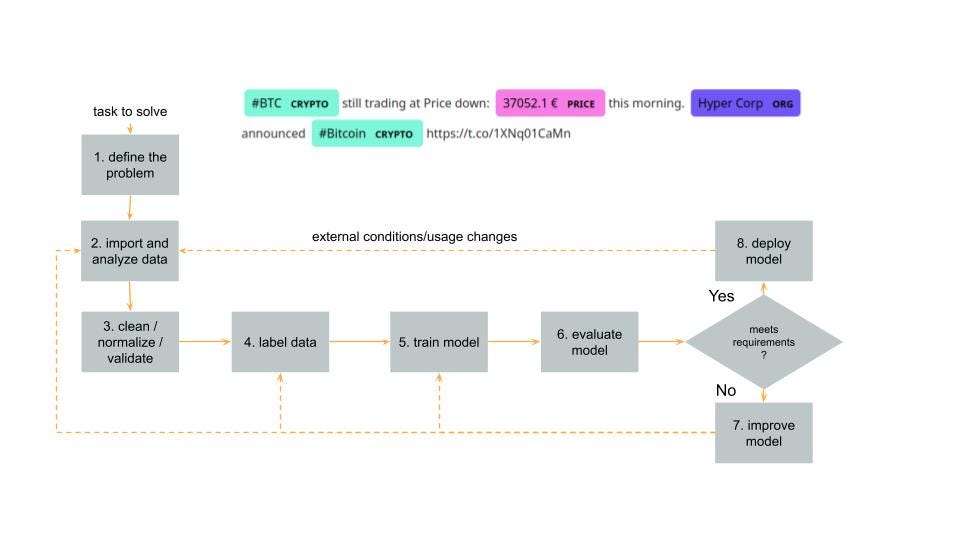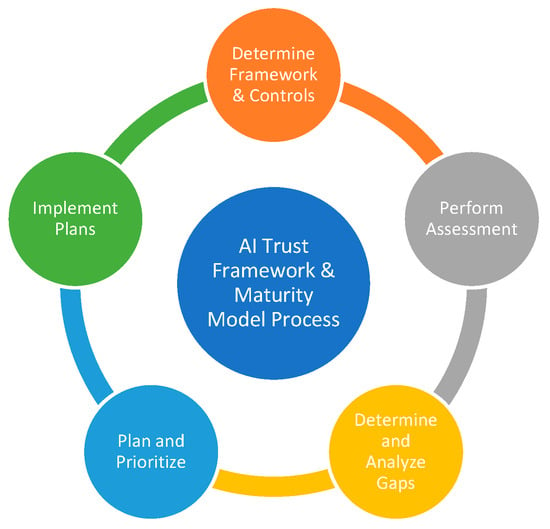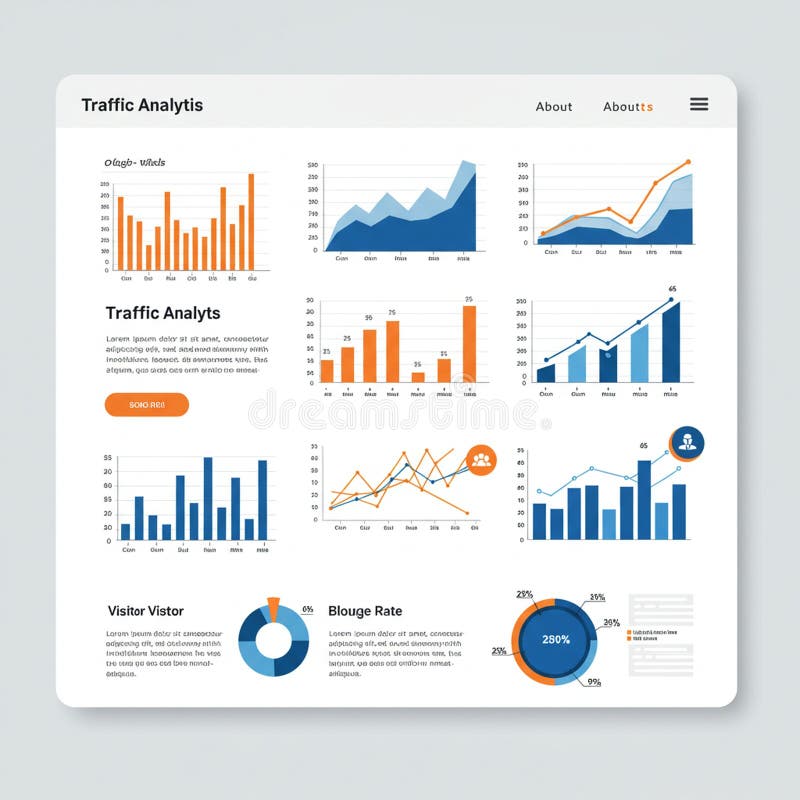The Ultimate AI Visual Content Creation Guide
Transforming Ideas into Stunning Graphics with AI
I've spent years watching the visual content landscape evolve, and nothing has been more revolutionary than the rise of AI-powered tools. In this guide, I'll walk you through everything you need to know to harness these powerful technologies and elevate your visual content strategy.
The Evolution of Visual Content Creation with AI
I've witnessed a remarkable transformation in the visual content landscape over the past few years. What once required expensive software and specialized design skills has been democratized through ai graphic generators that are accessible to everyone.

The shift from traditional design tools to AI-powered visual creation has been nothing short of revolutionary. I remember spending hours in Photoshop trying to create the perfect graphic for a blog post. Now, I can generate professional-quality visuals in minutes using conversational prompts.
This democratization of design has opened doors for content creators who previously couldn't afford professional designers. Today, a solo blogger or small business owner can produce visual content that rivals major brands in quality and impact.
Impact of AI-Generated Visuals on Engagement
The data clearly shows how AI-generated visuals are transforming audience engagement:
PageOn.ai represents the next evolution in this space—moving beyond simple image generation to conversation-driven visual creation. Rather than just responding to prompts, it engages in a dialogue to understand and refine your visual needs, much like working with a human designer.
Essential AI Visual Generation Tools for Content Creators
In my journey exploring ai visual tools, I've discovered that different platforms excel at different types of visual content. Understanding these specializations is key to selecting the right tool for your specific needs.
flowchart TD
A[AI Visual Content Tools] --> B[Image Generation]
A --> C[Infographic Creation]
A --> D[Video Generation]
A --> E[Presentation Design]
B --> B1[Text-to-Image Models]
B --> B2[Style Transfer Tools]
B --> B3[Image Editing AI]
C --> C1[Data Visualization]
C --> C2[Process Diagrams]
C --> C3[Timeline Creators]
D --> D1[Animation Tools]
D --> D2[Video Editing AI]
D --> D3[Motion Graphics]
E --> E1[Slide Generators]
E --> E2[Visual Storytelling]
E --> E3[Template Systems]
style A fill:#FF8000,stroke:#333,stroke-width:2px
style B1 fill:#FFC107,stroke:#333,stroke-width:1px
style B2 fill:#FFC107,stroke:#333,stroke-width:1px
style B3 fill:#FFC107,stroke:#333,stroke-width:1px
style C1 fill:#4CAF50,stroke:#333,stroke-width:1px
style C2 fill:#4CAF50,stroke:#333,stroke-width:1px
style C3 fill:#4CAF50,stroke:#333,stroke-width:1px
style D1 fill:#2196F3,stroke:#333,stroke-width:1px
style D2 fill:#2196F3,stroke:#333,stroke-width:1px
style D3 fill:#2196F3,stroke:#333,stroke-width:1px
style E1 fill:#9C27B0,stroke:#333,stroke-width:1px
style E2 fill:#9C27B0,stroke:#333,stroke-width:1px
style E3 fill:#9C27B0,stroke:#333,stroke-width:1px
Comparison of AI Visual Generation Approaches
| Approach | Strengths | Limitations | Best For |
|---|---|---|---|
| Text-to-Image Diffusion | High artistic quality, creative interpretations | Less precise control, inconsistent elements | Artistic illustrations, conceptual imagery |
| Template-Based Generation | Consistent branding, predictable results | Less creative flexibility, can feel generic | Social media posts, marketing materials |
| Data-Driven Visualization | Accurate representation of complex data | Less aesthetic focus, steeper learning curve | Reports, dashboards, infographics |
| Conversation-Driven Creation | Iterative refinement, intuitive interface | Newer technology, still evolving | Complex visual concepts, collaborative projects |
What makes PageOn.ai stand out in this landscape is its AI Blocks system. Rather than generating a complete image all at once, it allows me to build visuals component by component through natural conversation. This gives me the precision of template-based tools with the creative freedom of diffusion models.

I've found that integration capabilities are another crucial factor when selecting AI visual tools. The best platforms connect seamlessly with content management systems, social media schedulers, and design software to create a frictionless workflow.
For specialized content like AI-generated images for game environments, it's worth exploring tools specifically designed for that niche. These specialized generators often produce more contextually appropriate results than general-purpose tools.
From Concept to Visual: Mastering the AI Prompt Process
In my experience, the difference between mediocre and stunning AI graphic image generation often comes down to the quality of your prompts. Mastering this skill has completely transformed my visual content creation process.

Effective Prompt Structure
flowchart TD
A[Effective AI Visual Prompt] --> B[Subject Description]
A --> C[Style Reference]
A --> D[Composition Elements]
A --> E[Technical Parameters]
B --> B1[Clear main subject]
B --> B2[Detailed attributes]
B --> B3[Action or context]
C --> C1[Art style/aesthetic]
C --> C2[Color palette]
C --> C3[Reference artists/works]
D --> D1[Framing/perspective]
D --> D2[Lighting conditions]
D --> D3[Background elements]
E --> E1[Aspect ratio]
E --> E2[Resolution/quality]
E --> E3[Special techniques]
style A fill:#FF8000,stroke:#333,stroke-width:2px
I've learned that effective prompts follow a clear structure. They begin with a precise description of the subject, followed by style references, composition elements, and any technical parameters. This structured approach yields much more predictable and satisfying results.
Common Prompt Mistakes to Avoid
- Being too vague or general ("create a nice business graphic")
- Including contradictory elements ("realistic cartoon style")
- Overloading with too many requirements in a single prompt
- Neglecting to specify important details like composition or color scheme
- Using ambiguous terminology that AI might misinterpret
What I love about PageOn.ai's conversation-based approach is that it eliminates many of these common pitfalls. Instead of requiring a perfect prompt upfront, it engages in a dialogue to refine your concept iteratively. This feels much more natural and produces better results through collaboration rather than one-shot generation.

Brand consistency is another challenge when using AI visual generators. I've developed a strategy of creating a "brand prompt prefix" that I add to all my visual requests. This includes my brand colors, preferred style, and key visual elements that should appear consistently across all content.
Workflow Integration: Incorporating AI Visuals into Your Content Strategy
Integrating ai content creation tools into an existing workflow requires thoughtful planning, but the productivity gains are well worth the effort. I've developed a systematic approach that has tripled my visual content output.
flowchart TD
A[Content Planning] --> B[Content Creation]
B --> C[Visual Asset Generation]
C --> D[Review & Refinement]
D --> E[Publication & Distribution]
subgraph "AI Integration Points"
B1[AI-assisted writing]
C1[AI visual generation]
C2[AI image enhancement]
D1[AI-powered feedback]
E1[AI optimization for platforms]
end
B -.-> B1
C -.-> C1
C -.-> C2
D -.-> D1
E -.-> E1
style A fill:#e3f2fd,stroke:#333,stroke-width:1px
style B fill:#e3f2fd,stroke:#333,stroke-width:1px
style C fill:#FF8000,stroke:#333,stroke-width:2px
style D fill:#e3f2fd,stroke:#333,stroke-width:1px
style E fill:#e3f2fd,stroke:#333,stroke-width:1px
The key to successful workflow integration is identifying the specific points where AI visual generation adds the most value. For me, these include initial concept visualization, creating supporting graphics for long-form content, and generating variations for A/B testing.

One of my favorite features of PageOn.ai is its Deep Search capability. It automatically sources and integrates relevant visual assets based on the content I'm creating. This eliminates the tedious process of searching for stock photos or creating custom graphics for every piece of content.
Content Creator Productivity Impact
In my experience, the most successful approach is to balance AI-generated and custom-designed visual elements. I use AI for rapid ideation and creating first drafts, then refine the most important visuals manually or with designer input. This hybrid workflow gives me both speed and quality.
Advanced Visual Storytelling Techniques with AI
Creating a cohesive visual narrative across multiple content pieces is one of the most powerful ways to strengthen your brand identity. I've found that AI tools excel at maintaining this consistency while still allowing for creative variation.

Data visualization is another area where AI has transformed my approach. Complex datasets that would have taken hours to represent visually can now be transformed into compelling visual stories in minutes. The key is to focus on the narrative you want the data to tell, rather than just the raw numbers.
Transforming Abstract Concepts into Visual Representations
flowchart TD
A[Abstract Concept] --> B[Core Elements Identification]
B --> C[Visual Metaphor Selection]
C --> D[Component Visualization]
D --> E[Integration into Cohesive Visual]
B --> B1[Key attributes]
B --> B2[Relationships]
B --> B3[Process flows]
C --> C1[Cultural symbols]
C --> C2[Natural analogies]
C --> C3[Geometric representations]
style A fill:#e8eaf6,stroke:#333,stroke-width:1px
style B fill:#c5cae9,stroke:#333,stroke-width:1px
style C fill:#9fa8da,stroke:#333,stroke-width:1px
style D fill:#7986cb,stroke:#333,stroke-width:1px
style E fill:#FF8000,stroke:#333,stroke-width:2px
PageOn.ai excels at turning abstract concepts into structured visual representations. I've used it to visualize complex processes like customer journeys, organizational structures, and product ecosystems. The conversation-based approach is particularly valuable here, as it helps me clarify my own thinking about abstract concepts.
Techniques for Emotional Resonance in AI Visuals
- Color psychology: Use specific color palettes to evoke targeted emotional responses
- Visual metaphors: Incorporate symbols that connect with universal human experiences
- Composition focus: Direct attention to emotional focal points through visual hierarchy
- Human elements: Include people or human-like characteristics to increase relatability
- Contextual storytelling: Create visuals that imply a broader narrative beyond the single image
Combining text and visual elements effectively is crucial for maximum impact. I follow the principle of complementary information—the text should provide context that the image cannot, while the image should convey emotion and immediacy that text struggles to achieve.
Ethical Considerations and Best Practices
As I've deepened my work with AI-generated visuals, I've become increasingly aware of the ethical questions surrounding this technology. Copyright and ownership issues are at the forefront of these concerns.
Copyright and Ownership Considerations
I believe in being transparent with my audience about AI-assisted visual content. This doesn't mean flagging every AI-generated image, but rather being open about my creation process when asked and acknowledging the role of AI in my work generally.

Avoiding biases and stereotypes in AI-generated imagery requires conscious effort. I've developed a checklist that I use to review all AI visuals before publication, looking for problematic representations or unintended implications.
Guidelines for Responsible AI Visual Creation
- Review all AI-generated content for potential biases before publishing
- Be transparent about AI usage in your creative process
- Respect copyright by understanding the training data of your AI tools
- Develop internal policies about acceptable use of AI visual tools
- Stay informed about evolving legal and ethical standards in AI content creation
- Consider the impact of your visuals on represented communities
One aspect I appreciate about PageOn.ai's agentic approach is that it helps create unique, non-derivative visual content. By building visuals component by component through conversation, the results are less likely to closely mimic existing copyrighted works compared to single-prompt image generators.
Measuring Success: Analytics for AI Visual Content
To truly understand the impact of AI-generated visuals, I've found it essential to establish clear metrics and tracking systems. The right analytics approach can reveal which visual strategies are resonating with your audience.
Key Performance Metrics for Visual Content
A/B testing has been invaluable in my process for optimizing visual content engagement. By systematically comparing different visual approaches with controlled variables, I can make data-driven decisions about what works best for my specific audience.

I use a combination of tools to track visual content performance across platforms. Google Analytics provides basic engagement metrics, while specialized visual analytics tools offer heatmaps and attention tracking to see exactly how users interact with my images.
Case Study: Fashion Retailer's AI Visual Campaign
A mid-sized fashion retailer implemented AI-generated product lifestyle images across their e-commerce site and social channels. Their results after 90 days:
- 42% increase in product page engagement
- 27% higher click-through rate from social media posts
- 35% reduction in visual content production costs
- 19% increase in average order value
The key to their success was consistent A/B testing of different visual styles and systematic analysis of which visual elements correlated with higher conversion rates.
Interpreting visual content analytics requires looking beyond surface metrics. For example, a high-engagement image might not drive conversions if it creates expectations the product can't fulfill. I focus on connecting visual performance metrics to business outcomes for a complete picture.
Future Trends in AI Visual Content Creation
The landscape of AI visual tools is evolving at a breathtaking pace. Based on current trajectories, I see several key technologies shaping the next wave of visual content creation.
flowchart TD
A[Current State] --> B[Near Future
1-2 Years]
B --> C[Mid-term Future
3-5 Years]
C --> D[Long-term Future
5+ Years]
B --> B1[Enhanced personalization]
B --> B2[Video generation maturity]
B --> B3[Multimodal content creation]
C --> C1[Real-time collaborative creation]
C --> C2[Adaptive visual content]
C --> C3[Immersive 3D generation]
D --> D1[Ambient intelligence integration]
D --> D2[Neural interface design]
D --> D3[Autonomous content ecosystems]
style A fill:#e3f2fd,stroke:#333,stroke-width:1px
style B fill:#bbdefb,stroke:#333,stroke-width:1px
style C fill:#90caf9,stroke:#333,stroke-width:1px
style D fill:#FF8000,stroke:#333,stroke-width:2px
I believe we're witnessing a fundamental transformation in how visual branding and marketing operate. As AI tools become more sophisticated, the barriers between different content formats—text, image, video, interactive—are dissolving.

The convergence of text, image, and video AI generation is particularly exciting. Soon, I expect to see unified creative environments where a single prompt or conversation can generate coordinated assets across all these formats, maintaining perfect stylistic consistency.
PageOn.ai is pioneering the shift from tool-based to conversation-based visual creation. This approach feels more natural and accessible, especially for non-designers who might be intimidated by traditional design interfaces with their complex menus and terminology.
Preparing Your Content Strategy for the Future
- Experiment with emerging AI visual technologies before they become mainstream
- Develop flexible brand guidelines that can adapt to AI-generated variations
- Build skills in prompt engineering and visual direction rather than technical execution
- Create systems to archive and organize your AI-generated assets for reuse
- Focus on developing a distinctive visual voice that AI can enhance but not replace
To stay ahead of the curve, I recommend allocating a portion of your content budget specifically for experimenting with emerging AI visual technologies. The insights gained from these experiments will inform your broader content strategy as these tools mature and become industry standards.
Transform Your Visual Expressions with PageOn.ai
Ready to revolutionize your content creation process? PageOn.ai's conversation-driven approach makes creating stunning visuals intuitive and efficient—no design skills required. Start turning your ideas into powerful visual stories today.
Start Creating with PageOn.ai TodayEmbracing the Visual AI Revolution
Throughout this guide, I've shared my journey and insights into the transformative world of AI-powered visual content creation. As we've seen, these tools are democratizing design and enabling content creators of all skill levels to produce professional-quality visuals.
The key to success in this new landscape isn't just about having access to the latest AI tools—it's about developing a thoughtful approach to visual storytelling, understanding the nuances of effective prompting, and integrating these tools into a cohesive content strategy.
PageOn.ai represents the next evolution in this space, moving beyond simple prompt-response interactions to a truly conversational approach to visual creation. This makes the creative process more intuitive and accessible while producing more refined and personalized results.
As AI visual tools continue to evolve, the content creators who thrive will be those who embrace these technologies as collaborative partners in the creative process—enhancing their unique vision rather than replacing their creative input.
I encourage you to start experimenting with these tools today, beginning with simple projects and gradually incorporating AI-generated visuals into more of your content workflow. The future of visual content creation is here, and it's more accessible, efficient, and creative than ever before.
You Might Also Like
Visualizing the CIA Triad: A Modern Framework for Cybersecurity Success
Discover how the CIA triad (Confidentiality, Integrity, Availability) forms the foundation of modern cybersecurity. Learn implementation strategies and visualization techniques for security success.
AI-Powered Coding Assistants: Integrating Language Models into Development Workflows
Discover how AI coding assistants transform development workflows by integrating language models to create visual clarity in complex programming environments.
The Art of Startup Storytelling: Creating Compelling Visual Investor Narratives
Transform your startup pitch with powerful visual storytelling techniques that captivate investors. Learn how to craft compelling narratives that convert complex ideas into funding opportunities.
Essential Elements Every Successful Startup Pitch Deck Must Include | PageOn.ai Guide
Discover the 9 essential elements every winning startup pitch deck needs, from compelling opening hooks to financial projections that captivate investors and secure funding.